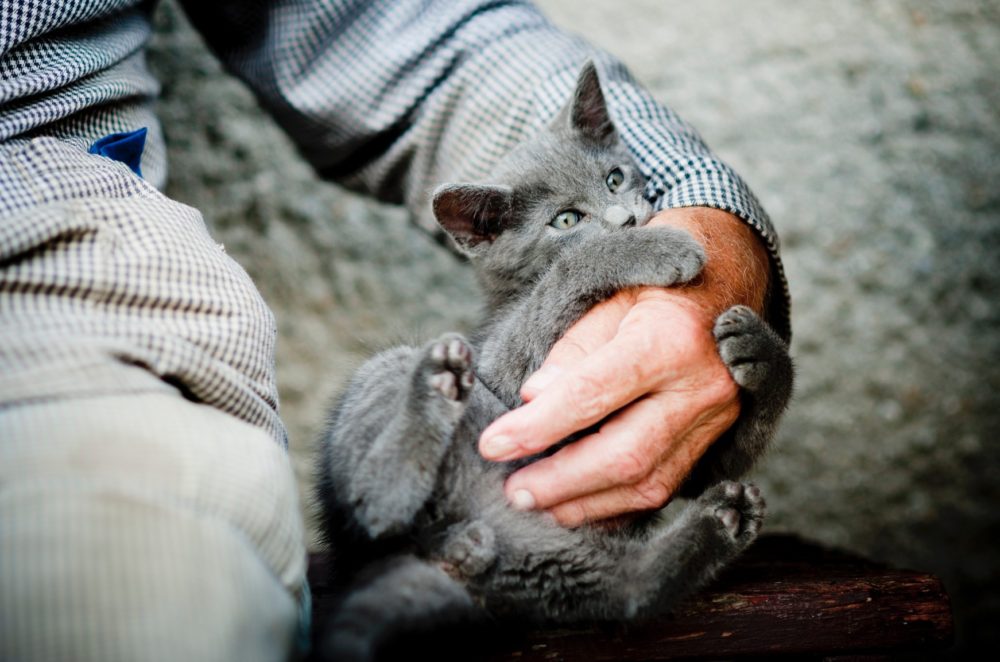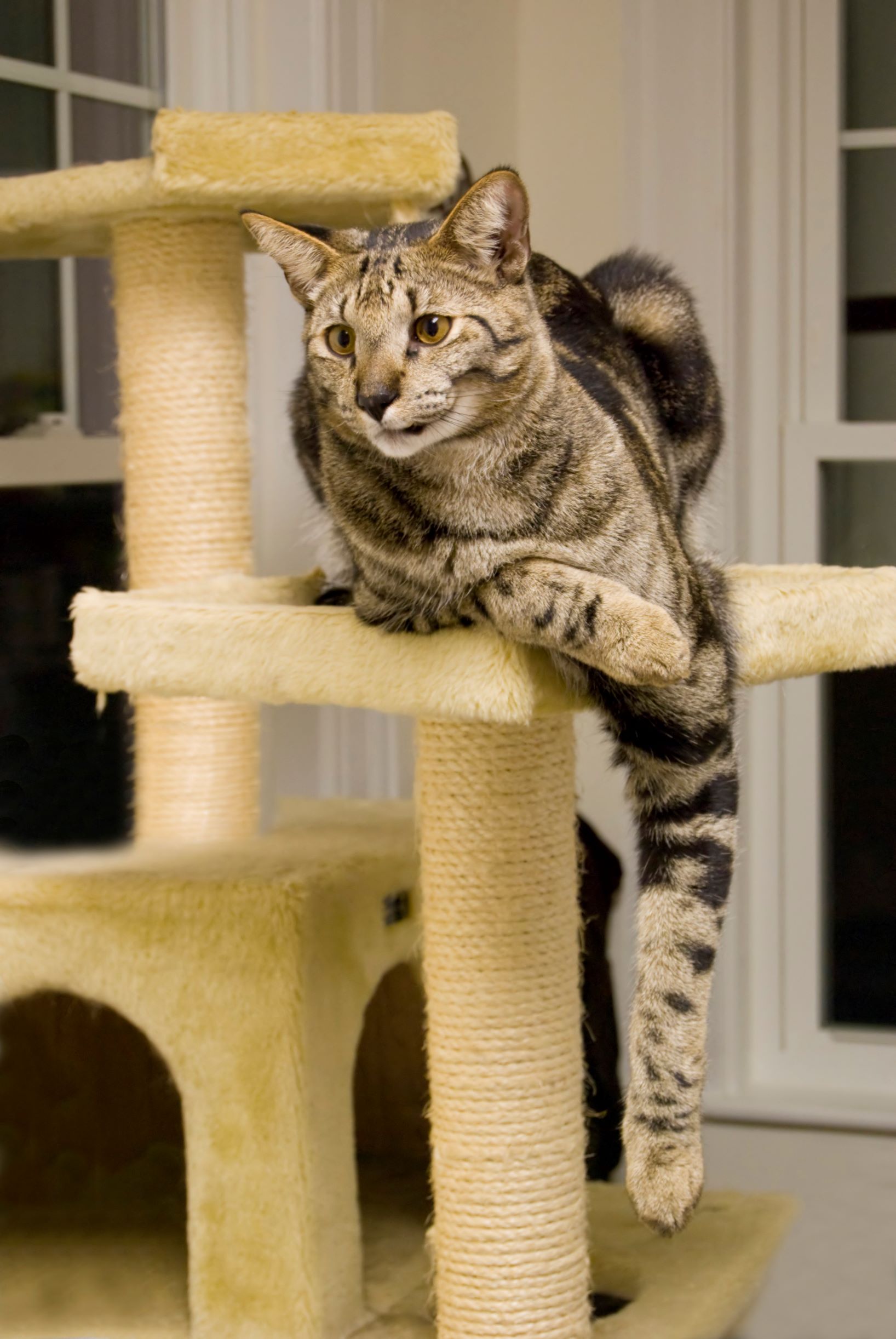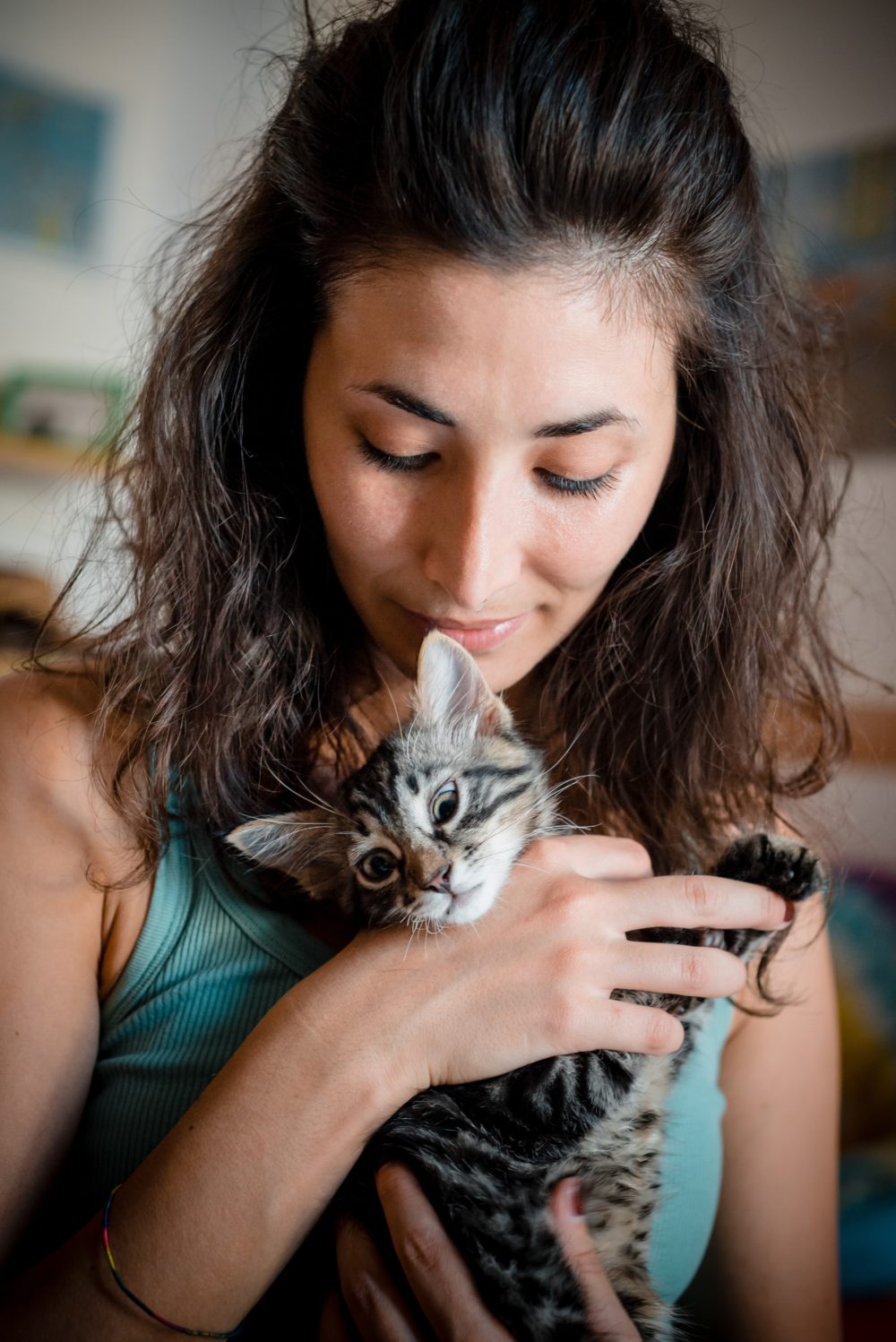
Do cats eat newts? Tadpoles? Frogs? Butterflies? Ladybirds?
Now that our wildlife pond in the back garden is established, it is truly a joy to see so many different birds, animals and insects using the pond daily – and living in it! Happy that our pond was safe for our cats (see out article ‘Are ponds safe for cats?’), we were now faced with the opposite dilemma – would the new pond inhabitants and daily pond visitors be safe from our cats?
Hunting is a natural instinct in all cats. Before cats were domesticated about 10,000 years ago, hunting was a means of survival. Being carnivores, hunting meat for food was critical to their existence. To the domesticated cats of today it isn’t about hunting for food in order to survive as they know that they will return home to a hearty meal. It’s about satisfying the urge to hunt – locating their prey, chasing it and playing and toying with their prey. Therefore it seems that some pond creatures may be at risk form a hunting kitty.
Do cats eat newts?
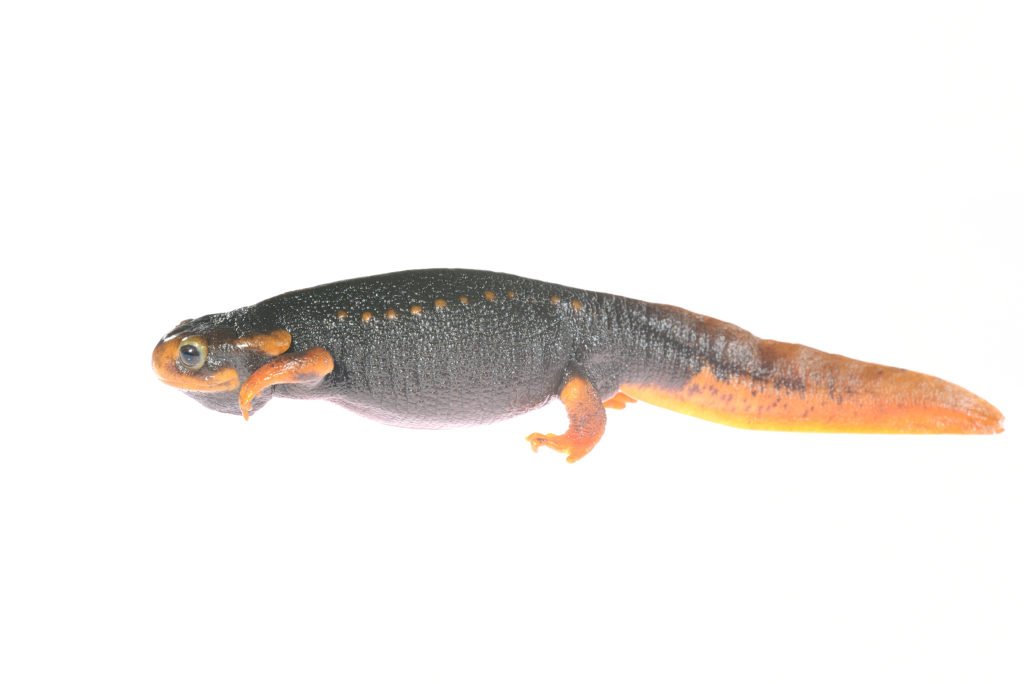
Newts come in many different sizes, varying due to species and age. A cat may be more wary of an adult newt which typically can be around 9 to 11 cms in size. A baby newt, being much smaller, can be a much more attractive prey. It all depends on the size, and bravery, of the cat! Domesticated cats are more likely to hunt for play rather than for their next meal therefore it is not likely that a cat will eat the newt. But, as we are all very aware, many cats do not adhere to the rules! And some may eat, or attempt to eat, the newt!
But, cats should not eat newts. The skin of newts contains a toxin called ‘tetrodoxtin’. This is to protect the newt from predators. The degree of toxicity will vary between different species. This toxin makes the skin taste pretty bad therefore most predators are likely to take one taste and spit it out quite quickly. And a cat that is not hungry is very unlikely to continue eating a foul tasting newt. As a precaution, if you believe that your cat has ingested a newt or seems unwell after tasting or licking a newt, please seek advice from your veterinary. Ingesting this toxin can result in an animal becoming unwell, and is some extreme cases, the predator can die.
Do cats eat frogs, froglets or toads?
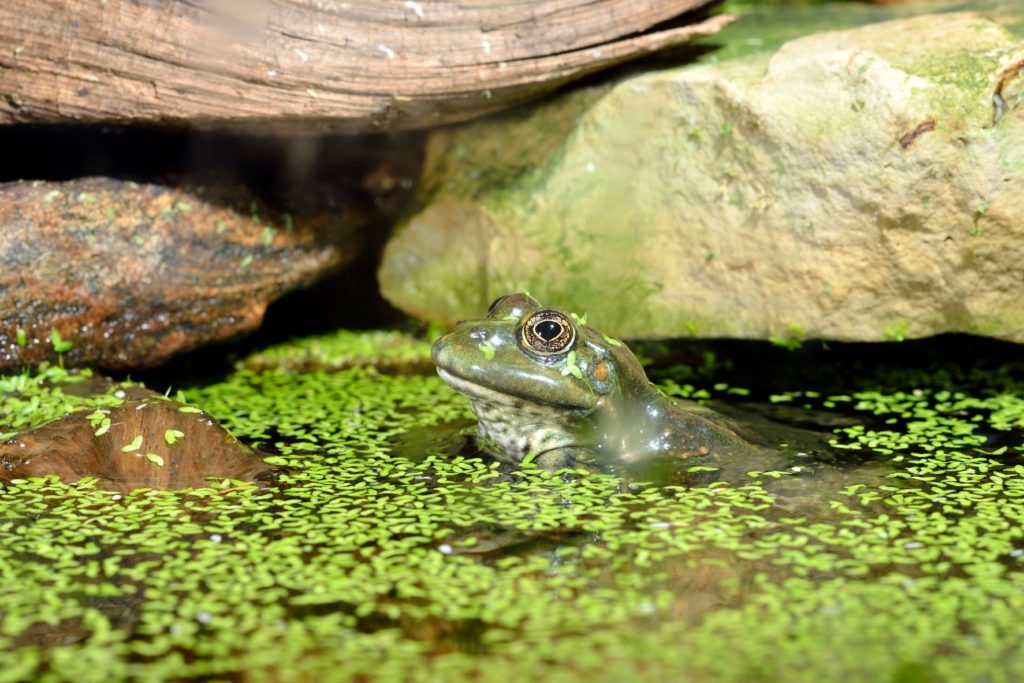
The little froglets (the stage between tadpoles and a fully grown frog) and frogs are vulnerable to be eaten by cats. Eating frogs is not a common habit by most felines, but the quick, stealth like movement of a hopping frog can certainly entertain a cat for quite some time. Your cat is very unlikely to be ill from eating a frog or froglet. The only exception to this is if a cat eats a poisonous frog which are most commonly found in tropical regions of the world.
However, toads are a very different matter. Some toads can be poisonous, and a couple of poisonous species can be found in both the United kingdom and United States. These are the
- The Colorado River toad (Bufo alvarius).
- The Cane toad(Bufo marinus).
If you suspect your cat has consumed a toad, particularly a poisonous species, then contact your veterinary immediately. The good news is that toads secrete a very unappealing mucus through their skin which cats, and indeed many other predators, find very unappealing. In the majority of cases, cats will steer well away from toads.
Do cats eat tadpoles?
Although not a common occurrence, some cats will eat tadpoles if they are accessible to them. There are a few ways to protect the tadpoles in your pond if your cat is partial to tadpoles:
Netting – Strong durable netting over the pond is a relatively easy and cost-effective method of keeping your pond safe from your cat. Some pond owners use chicken wire as a form of netting.
Water sprinkler – Some water sprinklers can be set to be activated by movement so when the cat approaches the pond it will set off the sprinkler. This one by PierTech detects movement within a 10 metre range. Once a motion is detected it activates the water jet for 5 seconds.
Plants to deter cats – Some plants emit odors that cats find unpleasant. By planting these around the pond it may deter any cats from approaching the pond area. Such plants include the scaredy-cat plant (Coleus canina), lavender, rosemary, rue and pennyroyal.
If cats ingest tadpoles from a poisonous breed of frogs, then this can make cats very ill. If you suspect this is the case please seek the advice of your veterinary immediately. It is best, to air on the side of caution, and keep your cat away from tadpoles if possible.
Do cats eat dragonflies?
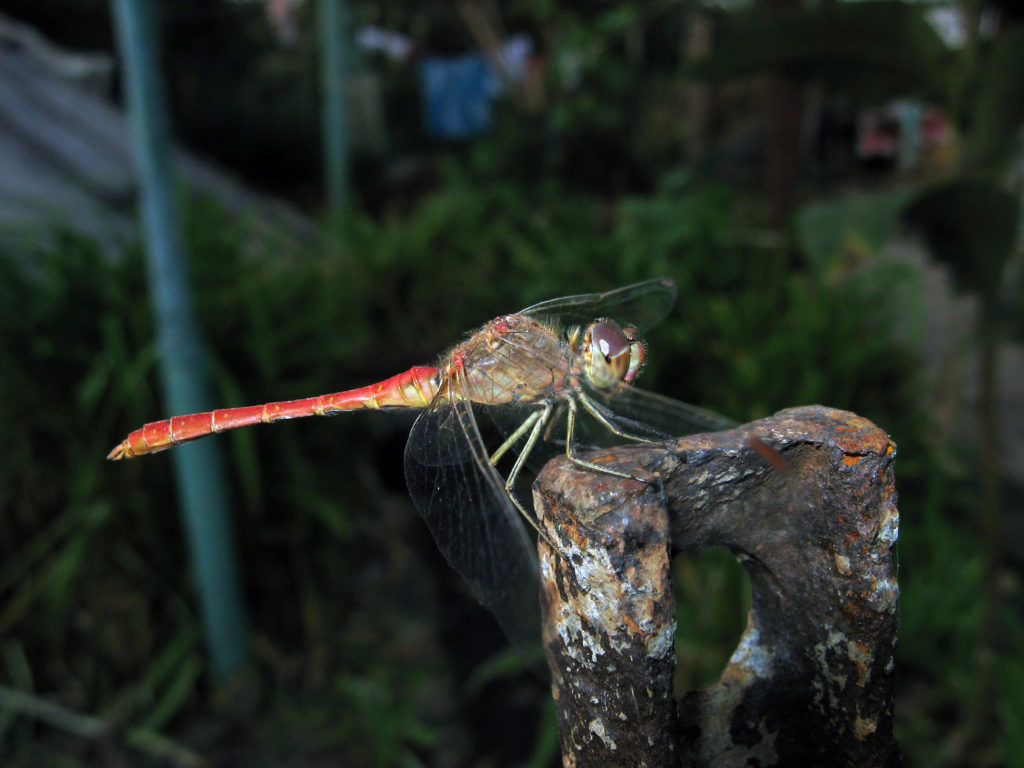
Apart from amphibians, our pond has attracted many dragonflies. Their colours are truly beautiful and the way they hover then dart off in flight is certainly eye catching. Any insects or small creatures that move in sudden ways can easily catch the attention of a playful kitty! A cat may well chase, catch and eat these brightly coloured flying insects but they won’t cause any harm to the cat.
Do cats eat butterflies?
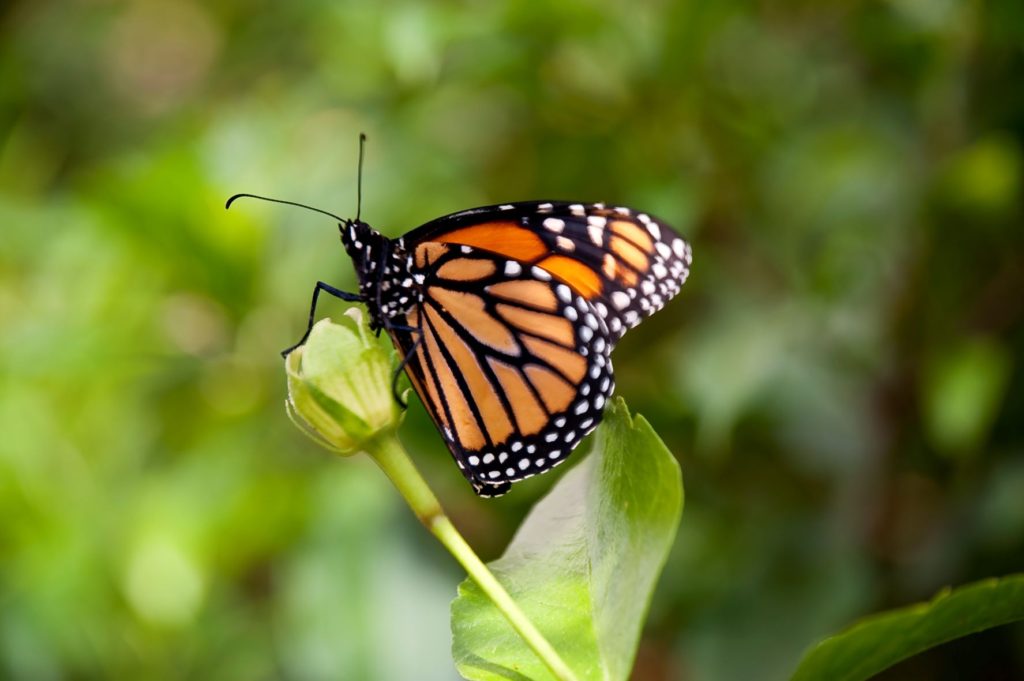
Just like the dragonflies, a colourful butterfly flitting from flower to flower can be perfect entertainment for a cat. Most butterflies will not cause any harm to cats if ingested.
Do cats eat ladybirds?
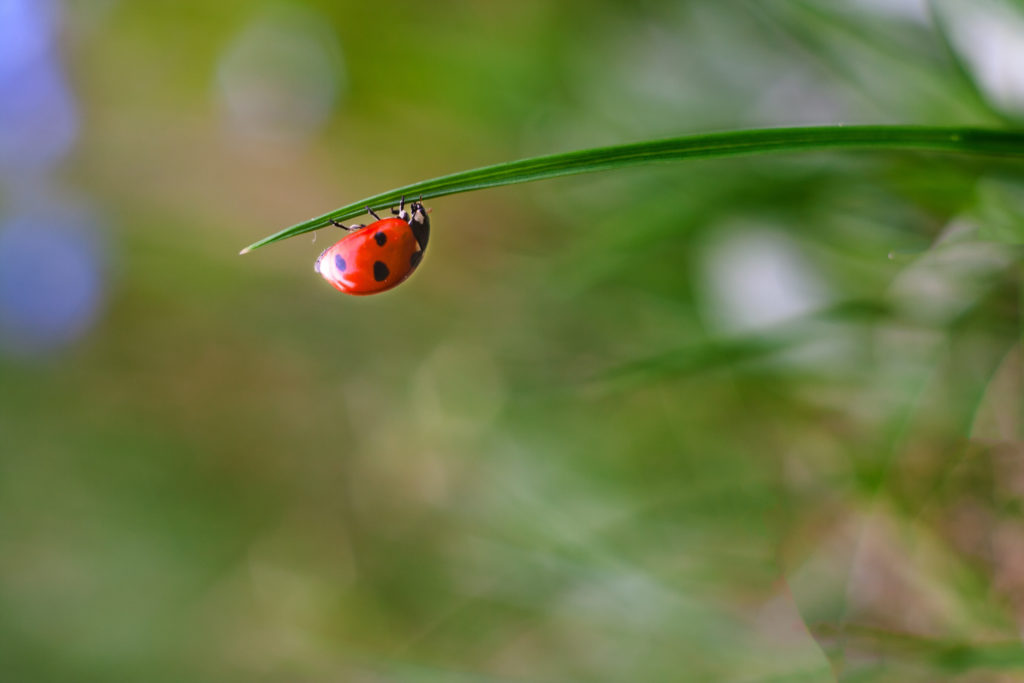
Ladybirds, or ladybugs, belong to the beetle family Coccinellidae and there are over 5000 different species. We are familiar in the UK with the red ladybugs with black dots. They are a welcome addition to the countryside and are helpful in controlling other bugs such as aphids. While it is unlikely that a cat will seek out ladybugs specifically, some cats may be attracted to their short sharp flight movements.
Ladybugs, and in particular the Asian lady bird (Harmonia axyridis) can cause ulcers or burns in the cat (or dog’s) mouth or digestive tracts.
9 ways to help protect wildlife from cats
With hunting being such a strong urge in our cats, are there ways that we can protect our wildlife. Here are 9 tips which may help to protect the wildlife:
1 Keep your cat indoors
The debate regarding indoor / outdoor cat is one which constantly divides cat owners. We have explored these issues and arguments in our article ‘Should I let my cat outside at night? Indoor or outdoor cat?’. Keeping your cat indoors will prevent your cat from hunting. This is much easier to implement from kitten stage compared to keeping a cat who is used to outside access, indoors. If this is the case then it is essential that their hunting instinct is satisfied with plenty of play time, access to climbing areas and a stimulating environment.
2. Get your cat a collar with a bell
Putting a collar with a bell on your cat will give warning to prey, and time for them to move to safety. With cats climbing trees, writhing under fences, going through thick bushes and so forth, it is critical to get a quick release collar. If your cat gets stuck, then the collar will release, and your cat can return to safety. An example of such a collar is this one, made by Bingpet, available on Amazon:
3. Plenty of playtime with your cat
Playtime relieves stress, anxiety and behavioural problems. Adult cat play time is based on their natural instinct to hunt and catch prey. Try to mimic this in play by making the toys move in a way that mimics a mouse or a bird. Just having a toy mouse available for your cat to plat just won’t stimulate your cat, it needs to move. When the toy starts moving her hunting instincts will kick in. Check out our article ’18 games to play with your cat’ for more play inspiration
4. Activity feeders
Spreading your cat’s daily food allowance into smaller, more spread out portions, and using activity feeders for a proportion of this may keep your cat’s instinct to hunt for food stimulated. It is easy to make your own activity feeders or there is a vast choice available on the market.
5. Ignore any ‘gifts’ your cat brings home
Some believe that giving your cat praise and attention after brining prey home will associate hunting with reward. Although from personal experience, ‘ignoring our eldest cat – ’ Misty’s – hunting conquests isn’t a successful strategy in our household.
6. Protection for the pond
Pond wildlife, or fish in a garden pond, can be protected with netting, plants that emit a smell that is unpleasant to cats and water sprinklers.
7. To protect the garden birds
Ensure any feeders or bird boxes are placed near prickly shrubs or trees with thorns. This will deter and prevent easy access near the birds. Ensure they are kept away from places where the cat can climb nearby to get near to them.
8. Supervised garden access
Why not let your cat have supervised access to the garden only? Training your cat to being on a leash or building a catio for your cat can be great solutions. Check out the following articles for more information on safe outside access for your cat:
What is a catio / cat enclosure?
Do indoor cats need outside time? Why does my cat refuse to go outside?
9. Cat free zone
Create a cat free area in your garden dedicated to wildlife. Use fencing, selective planting together with sonic deterrents to keep cats away from this particular area.
————————————————————————————————————————————————————————————————————————————–
Other articles you may find of interest:
Can a cat and tortoise live together? Fish? Hamster? Mice? Chickens? Sheep?
Cats and hedgehogs – a complete guide
Do cats eat rabbits? Can cats and rabbits get along?
Why does my cat eat spider webs/cobwebs? Why does my cat eat spiders?
Are ponds safe for cats? Can cats drink pond water?
Do cats keep rats away? Do cats hunt rats?
